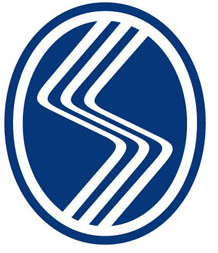Açık Akademik Arşiv Sistemi
Experimental investigation of performance of obstruction flow-meters designed with theoretical methods and computational fluid dynamics
JavaScript is disabled for your browser. Some features of this site may not work without it.
| dc.contributor.authors | Kucuk, Hasan; Unverdi, Murat | |
| dc.date.accessioned | 2023-01-24T12:08:38Z | |
| dc.date.available | 2023-01-24T12:08:38Z | |
| dc.date.issued | 2022 | |
| dc.identifier.issn | 1300-7009 | |
| dc.identifier.uri | http://dx.doi.org/10.5505/pajes.2021.22844 | |
| dc.identifier.uri | https://hdl.handle.net/20.500.12619/99493 | |
| dc.description | Bu yayın 06.11.1981 tarihli ve 17506 sayılı Resmî Gazete’de yayımlanan 2547 sayılı Yükseköğretim Kanunu’nun 4/c, 12/c, 42/c ve 42/d maddelerine dayalı 12/12/2019 tarih, 543 sayılı ve 05 numaralı Üniversite Senato Kararı ile hazırlanan Sakarya Üniversitesi Açık Bilim ve Açık Akademik Arşiv Yönergesi gereğince telif haklarına uygun olan nüsha açık akademik arşiv sistemine açık erişim olarak yüklenmiştir. | |
| dc.description.abstract | The aim of this study was to design obstruction flow meters to measure and control the volumetric flow of air, to manufacture them with additive manufacturing (3D printer) and to compare numerical and experimental performance. An ASME long radius low ft flow nozzle and sharp-edge orifice was the obstruction flow meter of choice due to ease of design and manufacture and common use. This study employed Computational Fluid Dynamics (CFD) to compare the numerical performance of 3D flow meters, whose geometric dimensions are determined using current design methods in the literature. Experiments were performed to calculate the performance of the obstruction flow meters produced using additive manufacturing. The inner diameter of the flow channel (152 mm) was based on the volume flow rate of 80 to 300 m(3)/h and the Reynolds number of 12,000 to 46,000 at the inlet of the flow meters. The ratio of the flow cross section diameter (d) of the flow meters to the channel cross section diameter (D) was beta-0.45 to limit pressure losses. The effectiveness of the tube bundle-type flow straightener and the effect of the distance between the flow meters and fans downstream of the flow meter on measurements were also investigated in the experiments to develop the flow at the upstream of the flow meters at a shorter distance and to shorten the tube length. The numerical results agreed with the theoretical design calculations with an average difference of 1.6% in the flow nozzle and an average difference of 7.8% in the orifice. The experimental results also agreed with the theoretical results with an average difference of 8% in the flow nozzle and an average difference of 14.3% in the orifice. The mean difference between the numerical and experimental results was 7.3% and 14.8% in the flow nozzle and orifice, respectively. Volume flow rate equations based on pressure drops were developed using the experimental results of both flow meters. | |
| dc.language | Turkish | |
| dc.language.iso | tur | |
| dc.publisher | PAMUKKALE UNIV | |
| dc.relation.isversionof | 10.5505/pajes.2021.22844 | |
| dc.subject | Engineering | |
| dc.subject | Flow nozzle | |
| dc.subject | Orifice plate | |
| dc.subject | Flow straightener (Flow conditioner) | |
| dc.subject | Flow rate measurement | |
| dc.subject | Computational fluid dynamics | |
| dc.subject | Additive manufacturing | |
| dc.title | Experimental investigation of performance of obstruction flow-meters designed with theoretical methods and computational fluid dynamics | |
| dc.type | Article | |
| dc.identifier.volume | 28 | |
| dc.identifier.startpage | 37 | |
| dc.identifier.endpage | 50 | |
| dc.relation.journal | PAMUKKALE UNIVERSITY JOURNAL OF ENGINEERING SCIENCES-PAMUKKALE UNIVERSITESI MUHENDISLIK BILIMLERI DERGISI | |
| dc.identifier.issue | 1 | |
| dc.identifier.doi | 10.5505/pajes.2021.22844 | |
| dc.identifier.eissn | 2147-5881 | |
| dc.contributor.author | Kucuk, Hasan | |
| dc.contributor.author | Unverdi, Murat | |
| dc.relation.publicationcategory | Makale - Uluslararası Hakemli Dergi - Kurum Öğretim Elemanı | |
| dc.rights.openaccessdesignations | Green Submitted, gold |
Files in this item
| Files | Size | Format | View |
|---|---|---|---|
|
There are no files associated with this item. |
|||











